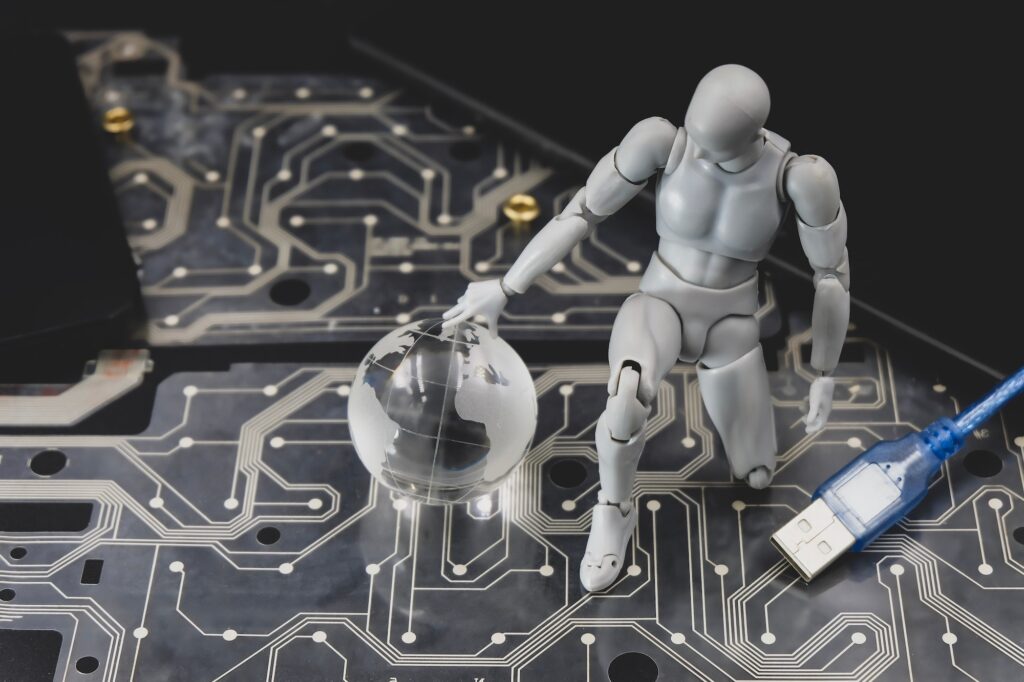The digital battlefield is evolving, and so is the art of cybersecurity. As organizations face increasingly sophisticated threats, artificial intelligence (AI) is emerging as a game-changer in penetration testing. This breakthrough technology is not only streamlining the vulnerability assessment process but is also redefining the role of traditional ethical hackers. While some worry that AI might replace human pentesters, the emerging trend points toward a powerful partnership between human expertise and machine precision.

From Traditional Methods to AI-Driven Security
Historically, penetration testing relied on skilled cybersecurity professionals who manually probed systems for weaknesses. Their expertise, intuition, and creative thinking allowed them to simulate real-world attacks and uncover hidden vulnerabilities. However, the sheer volume and complexity of modern digital environments have stretched human resources thin, making it challenging to maintain robust security.
Enter AI-driven tools. These advanced systems are designed to automate routine vulnerability scans, analyze vast datasets at incredible speeds, and continuously monitor network security. Unlike periodic manual tests, AI-powered tools provide real-time insights, ensuring that emerging threats are detected and mitigated without delay.
Unlocking the Power of AI in Penetration Testing
Speed and Scale:
AI can rapidly sift through enormous amounts of data, scanning networks, applications, and systems in a fraction of the time it takes a human. This capability not only increases efficiency but also reduces the risk of missing critical vulnerabilities.
Continuous Vigilance:
Traditional penetration tests are often conducted at intervals, leaving windows of opportunity for attackers. AI, on the other hand, offers round-the-clock monitoring, ensuring that any new or evolving threats are quickly identified and addressed.
Adaptive Learning:
Machine learning algorithms empower AI systems to continuously learn from new data. This means they can adapt to novel attack methods and even spot zero-day vulnerabilities—those elusive flaws that have yet to be discovered by traditional methods.
Data-Driven Insights:
AI excels at recognizing patterns within large datasets. By identifying trends and correlations, these tools provide deeper insights into security weaknesses, helping organizations craft more robust and proactive defense strategies.
The Human-AI Hybrid Model
While AI brings numerous advantages to the table, it isn’t without limitations. AI may struggle with the nuanced understanding and creative problem-solving that experienced human pentesters offer. Complex exploit scenarios, ethical dilemmas, and contextual decision-making still require the human touch.
The future of cybersecurity lies in a hybrid approach that leverages the strengths of both AI and human experts. AI handles repetitive, data-intensive tasks, freeing up human pentesters to focus on innovative threat analysis, strategic planning, and the nuanced interpretation of complex security challenges. This synergy not only enhances overall productivity but also drives continuous improvement in cybersecurity strategies.
Preparing for a Future of AI-Enhanced Cybersecurity
The integration of AI in penetration testing is set to transform the cybersecurity landscape dramatically. However, this transformation comes with its own set of challenges:
- Workforce Adaptation:
Cybersecurity professionals will need to continuously upskill and familiarize themselves with AI and machine learning concepts. The ability to interpret and act upon AI-generated insights will become an essential skill. - Tool Security and Ethics:
As reliance on AI grows, ensuring the security and integrity of these tools becomes paramount. Establishing ethical guidelines and rigorous oversight will be crucial to prevent misuse and maintain public trust. - Regulatory Evolution:
Governments and regulatory bodies are beginning to catch up with the rapid technological advancements. New standards and policies will likely emerge to ensure that AI is used responsibly within the cybersecurity realm.

Frequently Asked Questions (FAQs)
Q1: Will AI completely replace human penetration testers?
A1: No, AI is not expected to replace human pentesters entirely. Instead, it will automate routine tasks and enhance overall efficiency, allowing cybersecurity professionals to focus on complex, strategic challenges that require human creativity and judgment.
Q2: What are the main advantages of using AI in penetration testing?
A2: AI significantly increases speed and scalability, offers continuous monitoring, adapts to new threats through machine learning, and provides deep, data-driven insights that help identify vulnerabilities more effectively than traditional methods.
Q3: How can cybersecurity professionals prepare for the increasing integration of AI?
A3: Professionals should invest in continuous learning and upskilling, particularly in areas such as AI, machine learning, and data analytics. Embracing a collaborative approach that leverages both human expertise and AI capabilities will be key to staying ahead in the evolving threat landscape.
As the cybersecurity landscape continues to evolve, the fusion of AI and human expertise promises to usher in a new era of defense strategies. By leveraging the best of both worlds, organizations can build a more resilient and proactive security posture, ensuring that they remain one step ahead in the digital arms race.
Sources The Hacker News


